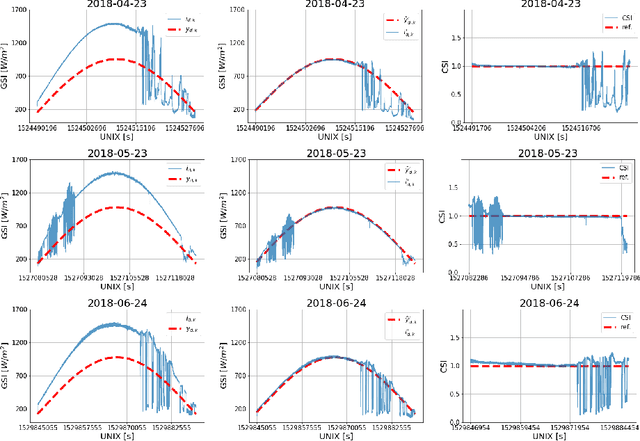Data Processing for Short-Term Solar Irradiance Forecasting using Ground-Based Infrared Images
Paper and Code
Jan 21, 2021



The generation of energy in a power grid which uses Photovoltaic (PV) systems depends on the projection of shadows from moving clouds in the Troposphere. This investigation proposes an efficient method of data processing for the statistical quantification of cloud features using long-wave infrared (IR) images and Global Solar Irradiance (GSI) measurements. The IR images are obtained using a data acquisition system (DAQ) mounted on a solar tracker. We explain how to remove cyclostationary biases in GSI measurements. Seasonal trends are removed from the GSI time series, using the theoretical GSI to obtain the Clear-Sky Index (CSI) time series. We introduce an atmospheric model to remove from IR images both the effect of atmosphere scatter irradiance and the effect of the Sun's direct irradiance. Scattering is produced by water spots and dust particles on the germanium lens of the enclosure. We explain how to remove the scattering effect produced by the germanium lens attached to the DAQ enclosure window of the IR camera. An atmospheric condition model classifies the sky-conditions in four different categories: clear-sky, cumulus, stratus and nimbus. When an IR image is classified in the category of clear-sky, it is used to model the scattering effect of the germanium lens.
 Add to Chrome
Add to Chrome Add to Firefox
Add to Firefox Add to Edge
Add to Edge